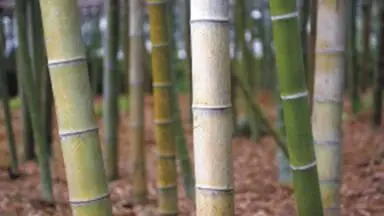Simon Foster - CHINA's Three Gorges & Xi'an
Здесь есть возможность читать онлайн «Simon Foster - CHINA's Three Gorges & Xi'an» весь текст электронной книги совершенно бесплатно (целиком полную версию без сокращений). В некоторых случаях можно слушать аудио, скачать через торрент в формате fb2 и присутствует краткое содержание. Год выпуска: 2010, Издательство: Hunter, Жанр: Старинная литература, на английском языке. Описание произведения, (предисловие) а так же отзывы посетителей доступны на портале библиотеки ЛибКат.
- Название:CHINA's Three Gorges & Xi'an
- Автор:
- Издательство:Hunter
- Жанр:
- Год:2010
- ISBN:нет данных
- Рейтинг книги:4 / 5. Голосов: 1
-
Избранное:Добавить в избранное
- Отзывы:
-
Ваша оценка:
- 80
- 1
- 2
- 3
- 4
- 5
CHINA's Three Gorges & Xi'an: краткое содержание, описание и аннотация
Предлагаем к чтению аннотацию, описание, краткое содержание или предисловие (зависит от того, что написал сам автор книги «CHINA's Three Gorges & Xi'an»). Если вы не нашли необходимую информацию о книге — напишите в комментариях, мы постараемся отыскать её.
CHINA's Three Gorges & Xi'an — читать онлайн бесплатно полную книгу (весь текст) целиком
Ниже представлен текст книги, разбитый по страницам. Система сохранения места последней прочитанной страницы, позволяет с удобством читать онлайн бесплатно книгу «CHINA's Three Gorges & Xi'an», без необходимости каждый раз заново искать на чём Вы остановились. Поставьте закладку, и сможете в любой момент перейти на страницу, на которой закончили чтение.
Интервал:
Закладка:
Several factors have contributed to the loss of Chinese flora and fauna. The sheer scale of humanity has meant that many species' habitats have been destroyed. The Chinese have consumed much of the original fauna, sometimes eating literally whatever they could find due to famine. Traditional medicinal beliefs relating to the efficacy of certain rare animal parts have further contributed to the demise of many species. The Communist regime has also played its part in the destruction of China's environment, often showing flagrant disregard for the laws of nature. Crazed periods such as the Great Leap Forward saw attention focused on increasing short-term output to ridiculous extremes - fields were overplanted and the crops and wildlife suffered. More recently environmentally damaging activities suchas logging, pollution and some questionable projects, including the Three Gorges Dam, have compounded the problem.
Habitats
As you'd expect from a country as vast as China, it has a diverse range of habitats, from wetland to desert, tundra to tropical forest and mountains to plains. Agriculture has replaced most of China's native forest, although there are still large expanses in the northeast that remain relatively untouched. The east is so highly developed that little of its original native habitat survives, but away from the coast there are still wild pockets, some of which have been designated national parks and forest reserves, such as Shennongjia in Hebei, which is reputedly home to a yeti-like creature! Out in the mountainous western regions there are extensive grasslands, which provide a festival of wild flowers in summer (July and August) and also support some fauna. The deserts of the northwest don't offer the same biodiversity as other parts of the country, but hold more wildlife than you might expect, including wild Bactrian camels.
National Parks & Conservation Projects
China was a late starter in the conservation race and, while the situation has certainly improved, it is already too late for some species and there is a long way to go to save those that remain. But all is not lost and hope remains. The first national park was established in Guangdong in 1956 and there are now over a thousand reserves, covering around 5% of China's land area, with dozens more planned. Reforestation projects are also starting in the hope of reducing desertification in the northwest. The work of a small number of dedicated individuals has highlighted the plight of some animal species, most notably the giant panda and this, in turn, has led to more widespread interest in wildlife and the environment, particularly among the younger generation.
The government is also realizing the severity of China's environmental situation and, after decades of abuse, seems to be coming round to a more sustainable approach to development. This is aided by the increasing importance of tourism in China, and as more and more upwardly mobile Chinese want to witness their country's native wildlife, there seems to be an economic as well as a conservation incentive. However, unless environmental tourism is responsibly managed, it could further degrade the environment (see Eco-Travel for more) and in a predominantly (and ever more polarized) poor country, people's own survival and prosperity is still the ultimate concern. Conservation areas are often poorly protected, meaning that poaching and logging still occur in these supposedly safe zones.
Conservation Organizations
If you're interested in contributing (whether financially or physically) or just learning more about some of the conservation projects around the country then try some of the organizations below. All are registered charities and staffed by volunteers so any help is welcome and if you're keen to donate to their cause you can do so online.
Friends of the Earth (www.foe.org.hk)
This successful global conservation organization runs a number of projects throughout Hong Kong and China. Some of their successes to date include preventing the building of a power station and a golf course in two of Hong Kong's country parks. They are also promoting pollution awareness and the use of unleaded fuel in the cities.
Greenpeace(www.greenpeace.org/china/en)
Greenpeace International has been publicizing issues such as environmental awareness, climate change, reusable energy and non-violent action here since 1997. Operations to date include the uncovering of illegal logging operations in Yunnan province, assistance in the development of ozone-friendly industrial technology and the promotion of sustainable energy sources, particularly wind-power.
Wildlife
While China is home to countless species you are only likely to encounter a small number of these, and to see most of them in the wild you'll have to invest some serious time and energy. This said, China has an enormous number of avian species and wherever you are you are likely to see a host of birds - even Hong Kong has its share and it's worth visiting the new Wetlands Parkand Mai Po Marshes. If birding is your primary interest, it's worth heading to the remote northeast of the country, which is notable for herons and cranes that abound between April and September. The northeast also offers some of China's last remaining great wilderness and is home to bears, musk deer and reindeer, moose and tigers. In terms of flora, although there are plants and flowers throughout the country, for botanists the far west is the place to go. Ever since Joseph Rock, the 20th-century explorer, made it out here and catalogued what he saw, Yunnan's incredible floral biodiversity has attracted specialists. The grasslands here and in Szechuan and Tibet also support a host of animals, including wild yaks and argali sheep. The drier climes to the north of here in Inner Mongolia and Gansu give rise to little in the way of wildlife, but are traversed by that old desert favorite, the Bactrian or two-humped camel. It's impossible to list all the creatures that there are to see in China, let alone describe them, but below I've selected some of the plants and animals you're most likely to see, along with a list of endangered animals.
Animals & Plants in Chinese
Mythology & Medicine
The importance of plants and animals in Chinese culture can be seen in many aspects of the country's arts, mythology and medicine. Chinese mythology owes a great deal to its flora and fauna, both real and imagined. The Chinese Zodiac pays tribute to this allegiance, with people born under each sign supposedly exhibiting characteristics of that animal. Both animals and plants are deemed to hold certain attributes and these are recorded in history through statuary such as Bixi, the enduring and strong tortoise, and cranes, which represent happiness and longevity. Traditional Chinese medicine makes great use of both flora and fauna, from mountain herbs to animal parts. Ironically many of the supposed benefits are based on the perceived strengths of certain creatures - the tiger is seen as wily, virile and powerful, thus these qualities can be attained by its consumption. The talents of various creatures are also put to use in different forms of martial arts, from crane to tiger.
Flora
Bamboo - This unique fast-growing woody grass is found all over southern China and is inextricably entwined in Chinese history, symbolizing regeneration. Bamboo is part of everyday life and is used to this day in everything from cooking to scaffolding. There are countless varieties; the graceful "phoenix tail,” which you'll find around Guilin and Yangshuo, is one of the most beautiful. Walking through a misty bamboo thicket as it creaks and groans is an enchantingly Chinese experience.

Интервал:
Закладка:
Похожие книги на «CHINA's Three Gorges & Xi'an»
Представляем Вашему вниманию похожие книги на «CHINA's Three Gorges & Xi'an» списком для выбора. Мы отобрали схожую по названию и смыслу литературу в надежде предоставить читателям больше вариантов отыскать новые, интересные, ещё непрочитанные произведения.
Обсуждение, отзывы о книге «CHINA's Three Gorges & Xi'an» и просто собственные мнения читателей. Оставьте ваши комментарии, напишите, что Вы думаете о произведении, его смысле или главных героях. Укажите что конкретно понравилось, а что нет, и почему Вы так считаете.












